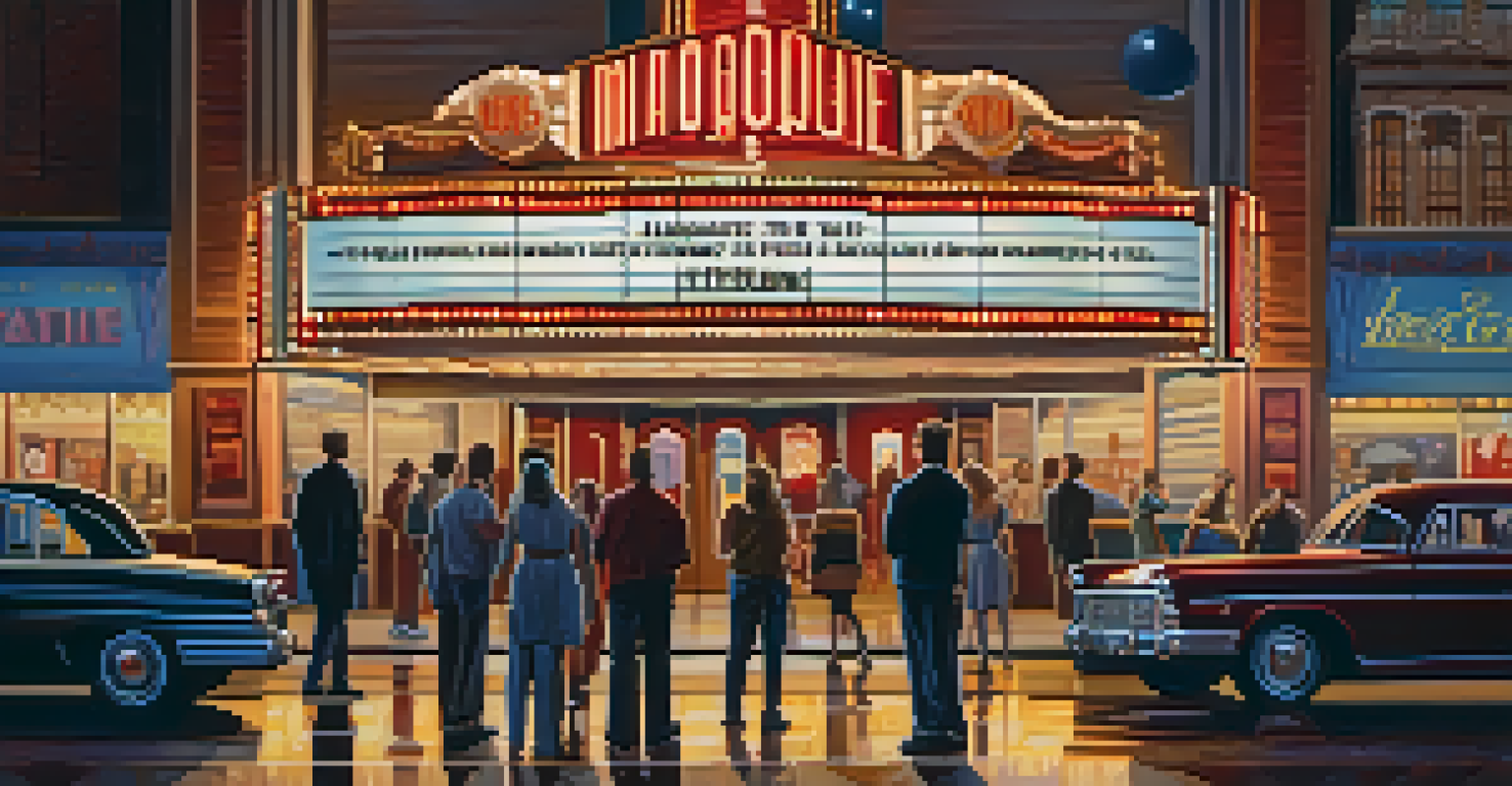Exploring the Dark Universe: Lessons from Failed Cinematic Universes

The Rise and Fall of Cinematic Universes
Cinematic universes have become a popular trend in filmmaking, with studios hoping to replicate the success of Marvel's interconnected stories. However, several attempts have led to disappointing outcomes. A key factor in these failures is the overambitious nature of the projects, often launching before a strong foundation is laid.
A great story is a journey, and the characters are the vehicles that get us there.
For instance, the Dark Universe, which aimed to revive classic Universal Monsters, crumbled after the poor reception of 'The Mummy.' The studio's eagerness to create a shared universe overshadowed the need for individual storytelling. This rush to assemble a universe without character development left audiences uninterested.
Ultimately, the rise and fall of these cinematic universes serve as a reminder that storytelling should come first, and the universe-building can follow if the narrative is compelling enough.
Character Development: The Heart of Any Universe
Strong character development is essential for any successful cinematic universe. Audiences want to connect with characters on a personal level, and when they don't, they quickly lose interest. In the case of the Dark Universe, characters were often one-dimensional and lacked depth.

For example, in 'The Mummy,' Tom Cruise's character felt more like a placeholder than a fully fleshed-out protagonist. Viewers need to see growth, challenges, and evolution to invest emotionally in the story. When character arcs are neglected, the entire universe suffers.
Storytelling Comes First
Successful cinematic universes prioritize strong storytelling over the rush to create interconnected narratives.
In contrast, successful franchises like the Marvel Cinematic Universe excel at character development, providing audiences with relatable heroes and their journeys. This engagement is crucial for the longevity of any cinematic universe.
The Importance of a Cohesive Vision
A cohesive vision is vital for the success of any cinematic universe. It's not just about assembling fan-favorite characters; the overall direction must be clear and consistent. The Dark Universe lacked this cohesive vision, resulting in disjointed storytelling.
In the world of cinema, the characters are the heartbeats of the story, and without them, the universe crumbles.
When Universal tried to launch its universe with 'The Mummy,' there was no clear plan for how each film would connect. This absence of direction left filmmakers free to pursue their ideas, but it ultimately resulted in a muddled experience for viewers. Without a guiding hand, projects can easily veer off course.
In successful universes, a consistent tone and interconnected plot threads create a satisfying experience for fans. A well-defined vision can help avoid the pitfalls seen in failed attempts.
Balancing Risk and Audience Expectations
Balancing creative risk with audience expectations can be tricky for filmmakers, especially in a shared universe. Many studios fall into the trap of playing it too safe, opting for familiar formulas instead of innovative storytelling. This was evident in the Dark Universe's approach, which leaned heavily on nostalgia without offering something new.
Fans of classic monsters expected a fresh take, but instead received a franchise that felt like a rehash of past ideas. To truly resonate, filmmakers need to push boundaries while still honoring the core elements that audiences love.
Character Depth is Crucial
Engaging characters with depth and growth are essential for audience investment in any cinematic universe.
Striking this balance can lead to groundbreaking films that engage both new viewers and long-time fans, fostering a sense of excitement and anticipation for future installments.
The Role of Marketing in Cinematic Success
Marketing plays a crucial role in the success of a cinematic universe, setting the tone for audience expectations. The Dark Universe's marketing strategy, which prominently featured its shared universe concept, may have backfired. Instead of enticing viewers, it created pressure that the films couldn't meet.
When a franchise is marketed heavily as a shared universe, any misstep becomes amplified in the public eye. This creates an uphill battle for the films to prove their worth. Effective marketing should focus on individual films while hinting at broader connections, rather than overwhelming audiences with lofty promises.
A more subtle approach allows filmmakers to build a universe organically, fostering excitement without the burden of unrealistic expectations.
Learning from Past Mistakes: The Path Forward
Every failed cinematic universe offers valuable lessons for future attempts. By analyzing what went wrong, filmmakers can avoid making the same mistakes. The Dark Universe, for instance, teaches us the importance of pacing and not rushing into a shared concept without a solid foundation.
Studios should focus on creating standalone films that can stand on their own merit while hinting at larger connections. This approach allows for organic growth and audience investment, ultimately leading to a more successful universe.
Cohesion is Key to Success
A clear and cohesive vision helps ensure that a cinematic universe maintains a satisfying and connected experience for viewers.
Learning from past failures can pave the way for innovative storytelling that captivates audiences and builds a lasting cinematic legacy.
The Future of Cinematic Universes: Hope on the Horizon
Despite the setbacks of failed cinematic universes, there's still hope for the future. Filmmakers are continually evolving their approaches, and the lessons learned from past failures can lead to more thoughtful and engaging narratives. Recent successes in the genre hint at a brighter future.
For example, films like 'Spider-Man: Into the Spider-Verse' showcase how to create a connected universe with a focus on character and creativity. This fresh approach demonstrates that audiences are ready for new interpretations and bold storytelling.

As filmmakers take these lessons to heart, we can anticipate more captivating and interconnected cinematic universes that resonate with audiences, inspiring a new generation of fans.